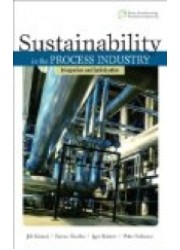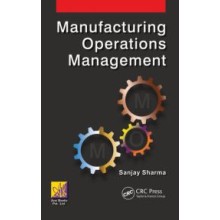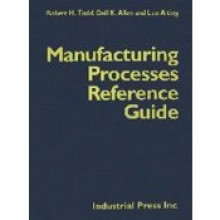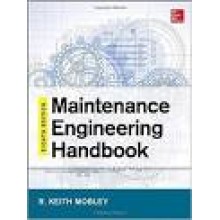Your shopping cart is empty!
Welcome visitor you can login or create an account
Sustainability in the Process Industry : Integration and Optimization
Publisher: McGraw-Hill
ISBN: 9780071605540
Author: Ferenc Friedler, Igor Bulatov, Jiri Klemes, Petar Varbanov
Dispatch Time: 2 - 3 Days
ISBN: 9780071605540
Author: Ferenc Friedler, Igor Bulatov, Jiri Klemes, Petar Varbanov
Dispatch Time: 2 - 3 Days
Our Price: $105.00
Quantity:
-
Add to Compare
Sustainability in the Process Industry explains process integration and optimization and discusses applications for improving the energy and water efficiency of industrial as well as nonindustrial energy users. Approaches for adapting these methodologies to include the integration of waste and renewable energy sources are covered. This authoritative text contains eight industrial-based case studies and nine testing examples with developed solutions. Details on software tools are also included in this practical guide.
Optimization goals and apllicatio areas within sustainable industrial process design and integration
Formulating sustainable tasks as optimization problems
Improving energy efficiency through process integration
Heat exchange and heat recovey
Water/mass integration
Minmizing water use and effluent generation
New relevant process integration research results
Process optimization frameworks, including mathematical programming and p-graph and s-graph frameworks
Applications of process integration ,modeling and optimization software tools.
Preface
Acknowledgements
Chapter 1 : Introduction and Definition of the Field
Introduction
Energy efficiency
Screening and scoping: Auditing, benchmarking, and good housekeeping
Balancing and flowsheeting simulation as a basis for optimizing
Integrated approach : process integration
Optimal process synthesis and combinatorial graphs
How to apply the process integration and optimization technology
Chapter 2 : Process Integration
Introduction: The need for process integration
What is process integration?
History and development of process integration
Pinch technology and targeting heat recovery the thermodynamic roots
Superargeting : Full fledged HEN targeting
Modifying the pinch idea for HEN Retrofit
Mass exchange and water networks
Benefits of process integration
The role of pi in makinfg industry sustainable
Examples of applied process integration
Summary
Chapter 3 : Process Optimization
Introduction
Model building and optimization: General framework and workflow
Optimization: Definition and mathematical formulation
Main classes of optimization problems
Conditions for optimality
Deterministic algorithums for solving continuous nonlinear optimization problems
Deterministic methods for solving
Stochastic search methods for solving optimization problems
Creating models
Chapter 4 : Process Integration for Improving Energy Efficiency
Introduction to heat exchange and heat recovery
Basics of process integration
Basic pinch technology
Extended pinch technology
HEN synthesis
Total site energy integration
Chapter 5 : Mass Integration
Water integration
Minimizing water use and maximizing water reuse
Introduction to water pinch analysis
Flow-rate targeting with the material recovery pinch diagram
MRPD Applied to fruit juice case study
Water minimization via mathematical optimization
Summary
Chapter 6 : Further Applications of Process Integration
Design and management of hydrogen networks
Oxygen pich analysis
Combined analyses , I : Energy-water oxygen-water and pinch - emergy
Combined analysis II: budget -income -time materials reuse -recycling supply chains and co2 emissions targeting
Heat- Integrated power systems: Decarbonization and low- temperature energy
Integrating reliability, availability , and maintainability into process design
Pressure drop and heat transfer enhancement in process integration
Locally integrated energy sectors and extended total sites
Summary
Chapter 7 : Process Optimization Frameworks
Classic approach mathematical programming
Structural process optimization:p-graphs
Scheduling of batch processes: s-graphs
Chapter 8 : Combined Process Integration and Optimization
The role of optimization in process synthesis
Optimization tools for efficient implementation of pi
Optimal process synthesis
Optimal synthesis of energy systems
Optimal scheduling for increased throughput profit, and security
Minimizing emissions and effluents
Availability and reliability
Summary
Chapter 9 : Software Tools
Overview of available tools
Graph- based process optimization tools
Heat integration tools
Mass integration software water
Flowsheeting simulation packages
General -purpose optimization packages
Mathematical modeling suites
Other tools
Chapter 10 : Examples and Case Studies
Heat pinch technology
Total sites
Integrated placement of processing units and data extraction
Utility placement
Water pinch technology
Chapter 11 : Industrial Applications and Case Studies
Energy recovey form an FCC unit
De-bottlenecking a heat integrated crude-oil distillation system
Minimizing water and wastewater in a citrus juice plant
Efficient energy use in other food and drink industries
Synthesis of industrial utility systems
Heat and power integration in buildings and building complexes
Optimal design of a supply chain
Scheduling a large-scale paint roduction system
Chapter 12 : Typical Pitfalls and How to Avoid Them
Data extraction
Integration of renewables : fluctuating demand and supply
Steady-state and dynamic performance
Chapter 13 : Information Sources and Further Reading
General sources of information
Heat integration
Mass integration
Combined analysis
Optimization for sustainable industry
Chapter 14 : Conclusions and Further Information
Further reading
Development trends
Conclusions
Bibiliography
Index
Write a review
Your Name:Your Review: Note: HTML is not translated!
Rating: Bad Good
Enter the code in the box below:
Price subject to change without notice
Copyright © 2014 Engineering Standards Bureau. All Rights Reserved.
Developed By Zoom Into Web
Copyright © 2014 Engineering Standards Bureau. All Rights Reserved.
Developed By Zoom Into Web








